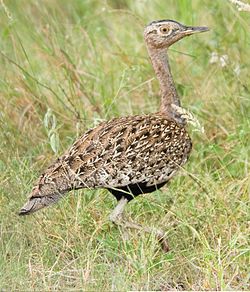| The population of birds |
|---|
 |
This is a list of Otidiformes species by global population. While numbers are estimates, they have been made by the experts in their fields. For more information on how these estimates were ascertained, see Wikipedia's articles on population biology and population ecology.
Contents
The IOC World Bird List (version 15.1) recognizes 26 species of Otidiformes. [1] IUCN/BirdLife International have assessed all members of this order, with population estimates provided for 11 (42%) species.
This list follows IUCN classifications for species names. Where IUCN classifications differ from other ornithological authorities, alternative names are noted. While not all of these species have had their populations quantified, species without estimates are also listed below in a separate table.

























